To create a truly excellent home theater audio-visual space, to obtain superior audio and video effects, constraints in addition to the performance of audio-visual equipment, the acoustic and optical characteristics of the room is an innate factor. In particular, the acoustic characteristics of various types of rooms that are difficult to predict and calculate will have a variety of effects on the playback of sounds, with room size and proportion being the most important part. In the classical rectangular room of modern architecture, when the ratio between the length, width and height of the room reaches a certain value, the peak-to-valley phenomenon in the low-frequency response occurs, resulting in an imbalance of the sound uniformity of the entire frequency band. Sound dyeing, seriously reducing the clarity and detail of the sound. Therefore, when creating an audio-visual room, the ideal is to build according to a suitable proportion of the room. For those who already have excellent equipment but can't get satisfactory sound effects, it's a good idea to pay attention to whether your room is built in the right proportion.
The research on the size and proportion of the room in the audio-visual room has received the attention of many famous acoustic experts since the 1940s, and found that the proportion and size of the room are two mutually influential room acoustic characteristics. At first, most of the research was carried out in the environment of auditoriums, recording studios, etc. After decades of development, with the maturity and popularity of home theaters, the size and proportion of rooms in small-space home audio-visual rooms have also appeared internationally. standard. Today, the establishment of the vast majority of outstanding home theater audiovisual rooms is based on these standards. The following will review the various studies over the past decades and the in-depth discussion of the international standard scale and size. I hope that more audio and video enthusiasts will pay attention to the room size and proportion of the audio-visual room. Sound effects. In order to build the foundation of the home theater, the ideal audio-visual space is constructed.
Review of the development of the size and proportion of the room of the audio-visual room <br> Since ancient times, according to the rationality, safety and convenience of the building, the residential rooms are mostly in the form of rectangles. Audio-visual rooms that use residential renovations often have acoustic problems due to their inherent deficiencies. This has also attracted people's attention. The discussion on the size and proportion of conventional rectangular audio-visual rooms has been evolving since the 40th century. The acoustics of the audio-visual room belong to the acoustic category of the small room, and the most prone problem is the low-frequency part, which causes the uneven sound frequency response and sound wave attenuation, which causes the sound reproduction of the sound reproduction. Changing the proportion of the room can greatly reduce the sound of the room, which is the consensus of many acoustic experts in history.
Introduction to Acoustics Knowledge - Small Room Acoustic Defects

Axial resonance diagram
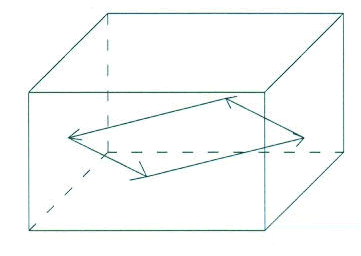
Tangential resonance diagram
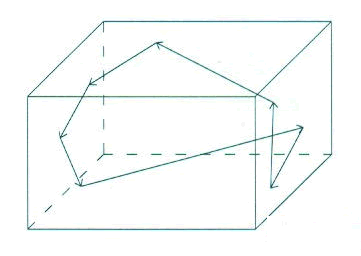
Schematic diagram of oblique resonance Talking about the acoustic defects of the home audio-visual room is inevitably linked to the small room acoustic system. The definition of a small room refers to a room with a small indoor space. The size of the three sides of the room is mostly within 10m, and most of the home audio-visual rooms are such an environment. Due to the small volume of the room, the length of the three sides can be proportional to the wavelength of the acoustic wave, especially at the low frequency part of 200 Hz. Therefore, due to the small room volume of the home audio-visual room, the sound of a certain frequency band is superimposed or attenuated due to the inherent resonant frequency mode of the room, which causes the problem of room sounding, which leads to a decrease in the sound quality of the room. Acoustic defects in home audio-visual rooms include acoustic defects such as standing waves, dressing filters, resonances and degeneracy. Among them, the standing wave, resonance and degeneracy are related to the size and proportion of the room. When the size of the room is close to the wavelength of the low frequency part or is in a simple multiple relationship with the wavelength of the low frequency part, the standing wave phenomenon occurs in the room. There are three ways of room resonance, including axial resonance, tangential resonance and oblique resonance. When the geometrical dimensions of the room are in an integer ratio, a degeneracy occurs when the indoor axial resonance and the tangential resonance frequency coincide or are close together. The degeneracy phenomenon will increase the sound and dyeing of the room, which is one of the reasons for studying the size and proportion of the room in the audio-visual room. [page]
The proportion of classic room recommendations proposed by early Western acoustic experts <br> In acoustic research, it must be said that Western countries are far ahead of China. The study of room acoustics in the audio-visual room began as early as the beginning of the last century and reached its peak in the mid-1940s. Excellent acoustic experts continued to emerge, and they gradually discovered that they sounded and sounded in the established audio-visual room. For the control of diffusion, it is better to choose the shape and proportion of the room in the early stage of establishing the audio-visual room. As a result, research on the proportion of rooms in the audio-visual room has been continuously carried out, and it has been found that the proportion of the room cannot be limited to a certain proportion, but a recommended range of proportions. The famous Boer line is a classic among them.
In addition, regarding the shape of the room of the audio-visual room, these acoustic experts also studied various types of rectangles, and finally said that the rectangular room is easy to construct and acoustically control, and any environment should avoid the concave surface as much as possible, because it will cause Acoustic focus and blind spots make it difficult to eliminate the effects.
Recommended ratios for some of the most famous rooms in the early days:
Acoustic experts recommend room ratio (height: width: long)
Sabine 1:1.5:2.5
Volkmann 1:1.6:2.5
Knudsen 1:1.88:2.5
Harmonic 1:2:3
Boner 1:1.26:1.59
In addition to the above five recommended ratios, there is also a golden ratio of 1:1.62:2.62 and 1:1.67:2.67 recommended by early European acoustic experts. It can be known from the ratio of the seven recommended rooms that the scope of the room ratio is roughly set to 1: (1 to 2): (1.5 to 3), although the recommended ratio of the above several rooms is larger for the volume. The concert hall was set up, but it also laid a solid foundation for the establishment of the standard of the small room in the later period. Of noteworthy is the 1:1.26:1.59 recommended by Boner, which is the proportion of rooms recommended for smaller broadcast studios, and eventually became the predecessor of international standards for home theater audio-visual room recommendations.
Bolt-Area, proposed by the famous acoustic expert Bolt in 1946
In the course of research and discussion on the proportion of rooms in the early part of the last century, the best results were obtained from the Boer line brought by the famous acoustic expert Bolt, which transformed the blunt digital ratio into a specific image range. Bolt assumes that the natural resonant frequency of a rigid rectangular room is evenly separated, so it will be flatter on the sound frequency response curve without excessive peaks and valleys. However, as far as the current acoustic theory is concerned, it is not ideal to use the average mode interval as the basic theory, but at the time, it cannot be said that it is a major breakthrough.

â–² Above: The Bolt-Area brought by the famous acoustic expert Bolt brings great help to the study of the proportion of the later generation rooms. The closed curve in the figure is the famous Boer line. The horizontal axis is W (room width ratio), the vertical axis is L (room length ratio), and the height ratio of the room is set to 1. Bolt believes that the range inside the closed curve is the ideal ratio of the room, and this closed curve is derived for small and medium-sized rooms. The left side of the curve corresponds to a relatively small room, and the right side corresponds to the corresponding volume. Larger room. In the same year, Bolt also noticed that there are also a number of acceptable room proportions in areas outside the closed curve, which is determined by the fact that the theory based on the average mode interval is still flawed.
Introduction to Acoustics Knowledge - Room Inherent Resonance Frequency <br> The inherent resonant frequency of a room is inextricably linked to the degenerate mode of one of the small room acoustic representation problems. Simply put, for a rigid room, the geometry of the room is an integer ratio, and the room axial resonance and the tangential resonance frequency coincide or are similar, which will result in degenerate mode or degeneracy. For a rectangular room with a rigid wall that is completely enclosed, it can be seen as a resonance chamber whose natural resonant frequency depends on the length of the room (L), width (W) and height (H). All natural resonant frequencies in the room can be calculated by the following formula.

â–² Above: In the formula, C is the speed of sound (340m/s), nx, ny and nz can take any positive integer (0,1,2,...,n), so it is not difficult to find that the value for each group will have An inherent resonant frequency, so there are countless resonant frequencies throughout the room. .
When the sound frequency of the user's sound system is the same as a certain natural frequency in the room, the whole room will resonate at that frequency, causing the sounds at certain fixed positions in the room to superimpose and become peak. The sound becomes louder; at the same time, the sound in a certain fixed position in the room has a valley value, and the sound becomes weak, which forms a standing wave. Assume that when the degenerate mode of the room occurs, the horizontal and vertical resonance frequencies are superimposed, which will greatly enhance the standing wave problem in the room. In particular, the most prone to the standing wave problem is the low frequency part of the entire sound frequency band, that is, In the frequency range of about 200 Hz or less, the original sound in the room is distorted, and the specific sound is a click. This is also a phenomenon that often occurs in small-volume home theater audio-visual rooms.
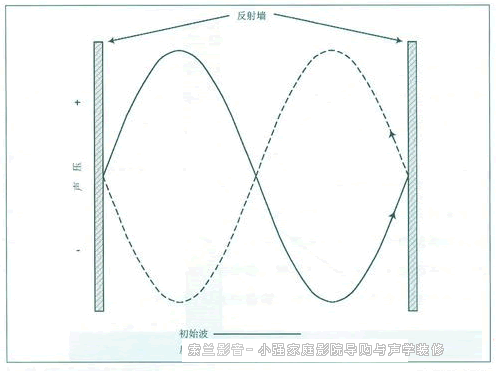
The formation of room resonance actually distributes most of the resonance frequencies in the room to the medium-high frequency band above 200 Hz. However, due to the large number of resonance frequencies and high distribution density, there is no obvious frequency superposition and attenuation. In the low frequency region below 200 Hz, the number of resonance frequencies is not much. When the degeneracy phenomenon occurs, the resonance frequency distribution in the low frequency portion is intensified, and a severe peak-to-valley phenomenon occurs.
The room acoustic model with a standard length, width and height of 7m, the lowest resonance frequency in 10 vibration modes, is the following table:
Vibration mode 1,0,0 0,1,0 0,0,1 1,1,0 1,0,1 0,1,1 1,1,1 2,0,0 0,2,0 0,0 ,2
Resonance frequency (Hz) 24 24 24 34 34 34 42 50 50 50
From the above table, it can be found that the resonance frequency is the same in some vibration modes, for example, 24 Hz, 34 Hz, 50 Hz, which is the overlapping phenomenon of the resonance frequency, which is the degeneracy of the resonance frequency, and the frequency is the degenerate frequency.
According to the latest research, there is no proportional value that can make the resonance frequency of all rooms evenly distributed, but because the human ear has a certain degree of tolerance in hearing, as long as the unevenness of the resonance frequency distribution is controlled at a reasonable level. Within the scope, it can meet the requirements of hearing. The concept of the Boer line brought by Bolt is also looking for this control range.
It is worth noting that the calculation formula of this resonance also has limitations. It is only applicable to rigid walls. Any absorption will affect the performance of the sound, such as changing the frequency characteristics.
[page]
Room acoustic simulation of the multiple room recommended ratios mentioned above <br> Room mode acoustic calculator from amroc.andymel.eu If you want to simulate the acoustic calculation of the room ratio, you can log in to amroc.andymel.eu, The related free calculations are provided above. The following will simulate the proportion of the room recommended by the early acoustic experts, calculate the natural resonance frequency of the room within 200Hz, the sound speed is 343m / s, the room height is always 3 meters.
Insert acoustic simulation folder diagram
Sabine: 1:1.5:2.5
Height: 3m, width: 4.5m, length: 7.5m, area: 33.75m2, volume: 101.25m3

Room resonance mode distribution within 200Hz is more uniform

The recommended proportion of the room is above the line of the Bol
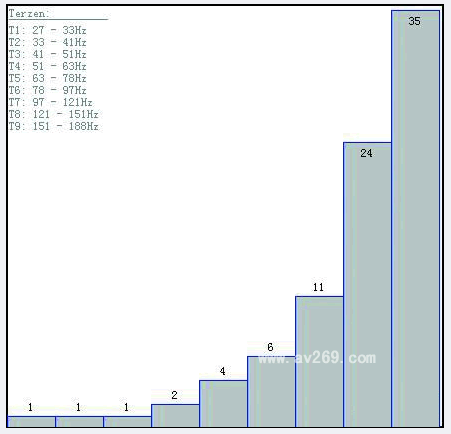
Bonello's 1/3 octave standing wave density statistic, in line with monotonically increasing requirements
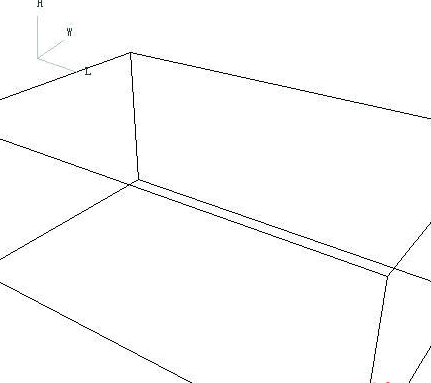
Room size simulation map, moderate length on three sides, belonging to ordinary household environment
Volkmann: 1:1.6:2.5
Height: 3m, width: 4.8m, length: 7.5m, area: 23.04m2, volume: 69.12m3

Room resonance mode distribution within 200Hz is more uniform
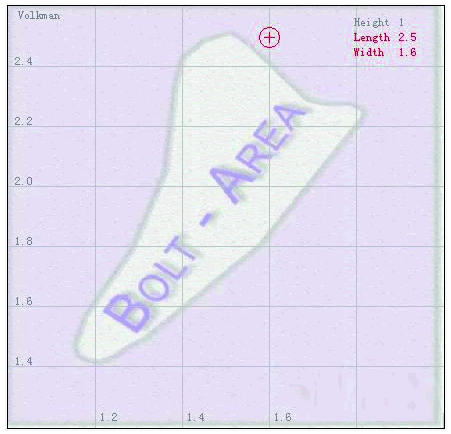
The recommended proportion of the room is outside the line of the Bol
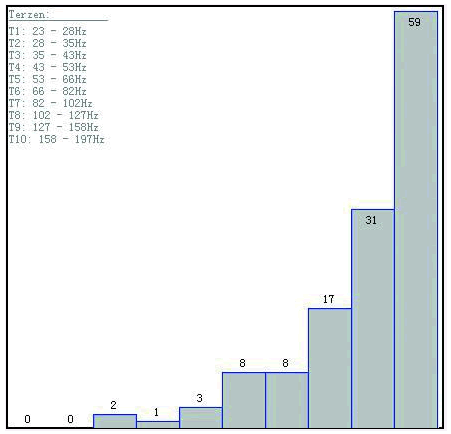
In Bonello's 1/3 octave standing wave density statistics method, the number of adjacent co-frequency is greater than 5, and the T3 and T4 frequencies are monotonically decreasing, which does not meet the requirements.
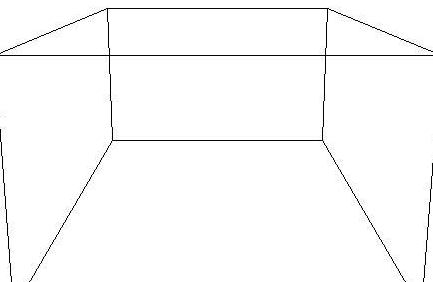
Room size simulation, belonging to a small space environment
Knudsen: 1:1.88: 2.5
Height: 3m, width: 5.64m, length: 7.5m, area: 42.3m2, volume: 126.9m3

Room resonance mode distribution within 200Hz is more uniform
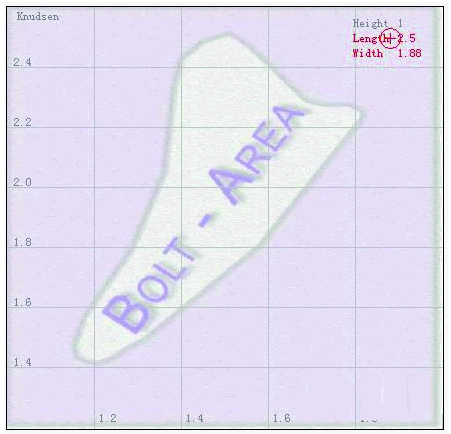
The recommended proportion of the room is outside the line of the Bol
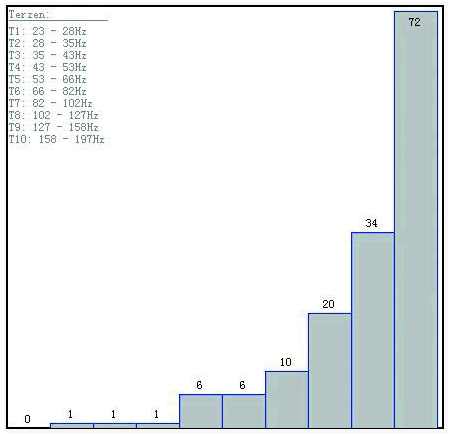
In Bonello's 1/3 octave standing wave density statistics method, the number of adjacent co-frequency appears greater than 5, which does not meet the requirements.
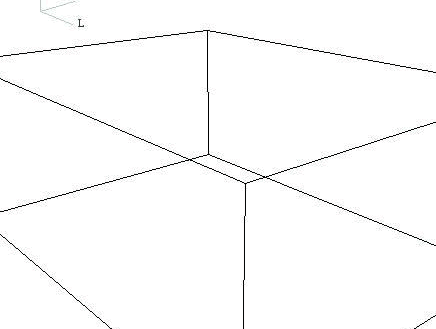
Room size simulation map, belonging to a larger family audiovisual space
The following calculated image omits Harmonic: 1:2:3
Height: 3m, width: 6m, length: 9m, area: 54m2, volume: 162m3
Room resonance mode distribution within 200Hz is more uniform
The recommended proportion of the room is outside the line of the Bol
In Bonello's 1/3 octave standing wave density statistics method, the T1 to T3 frequency range does not meet the requirements, and the frequency above T5 is monotonically increasing.
Room size simulation map, belonging to the larger family audiovisual space Boner:1:1.26:1.59
Height: 3m, width: 3.78m, length: 4.77m, area: 18m2, volume: 54m3
Room resonance mode distribution within 200Hz is more uniform
The recommended proportion of the room is at the bottom left of the Bol line.
In Bonello's 1/3 octave standing wave density statistics, it is monotonously increasing, meeting the requirements.
Room size simulation, small size, suitable for small home environments
Golden ratio: 1:1.62: 2.62
Height: 3m, width: 4.86m, length: 7.86m, area: 38.2m2, volume: 114.6m3
Room resonance mode distribution within 200Hz is more uniform. The proportion of the recommended room is outside the Boer line. In Bonello's 1/3 octave standing wave density statistical method, it is monotonously increasing, meeting the requirements.
Room size simulation map, moderate size early European recommended standard: 1:1.67: 2.67
Height: 3m, width: 5.01m, length: 8.01m, area: 40.1m2, volume: 120.4m3
The room resonance mode distribution within 200Hz is more uniform. The proportion of the room is recommended. In Bonello's 1/3 octave standing wave density statistics method outside the Boer line, the T2 frequency begins to show a monotonically increasing room size simulation map, which belongs to a larger Audiovisual room space
[page]
Mid-term and recent research on the proportion of rooms in the audio-visual room. Based on the research results of early acoustic experts on the proportion of rooms, since the 1960s to the present, there has been a new calculation method for finding the optimal range of room ratios. Well-known statistics include loose resonance frequency statistics from Gilford, Louden's resonance frequency distribution standard deviation uniformity statistics, Bonello's 1/3 octave standing wave density statistics, and Walker's calculation of low-frequency performance index based on a simple frequency distribution. law.
Gilford: loose resonance frequency statistics
Gilford performs a lookup grouping of the standing wave bandwidth of approximately 20 Hz, changing the size of the room, and continuously calculating until a satisfactory average distribution occurs. At that time, Gilford was done by hand calculations, and the amount of work was great. It is now completely possible to do this with a computer for optimal calculations. Gilford also pointed out at the time that Bolt's proposed 1:1.5:2.5 ratio had some problems because the axial mode caused changes in the acoustic properties of the room.
Louden: Statistical method for standard deviation uniformity of resonance frequency distribution
In 1971, the famous acoustic expert Louden used the uniformity statistical method of the standard deviation of the resonance frequency distribution, and the calculation accuracy was more accurate than the average difference statistical method proposed by the early Bolt. Louden calculates the first 36 resonant frequencies and their standard deviations in 125 rectangular rooms with a proportional interval of 0.1 in the range of 1:(1.1 to 1.9): (1.1 to 2.8). In order to avoid the influence of the volume of the room, the volume of each proportion selected by Louden was selected to be 201.6m3, and then the standard deviation was used to judge the order of the size ratio of the 125 rooms. This resulted in a ratio of 1:1.4:1.9 recommended by the International Broadcasting and Television Organization and the European Broadcasting Union, and the ratio of classic rooms such as 1:1.5:2.1, 1:1.4:2.1 and 1:1.6:2.1 appeared in Louden. Among the research results. The ratio of the room ratio obtained from the study of Louden is compared with the Boer line drawn by Bolt. The best three values ​​are in the middle of the line, which is quite close to the Bol line, and the best choice for future generations. The room size ratio is convenient.
Room acoustic simulation of the proportion of classic rooms recommended by Louden
Louden: 1:1.5:2.1
Height: 3m, width: 4.5m, length: 6.3m, area: 28.35m2, volume: 85.05m3
The room resonance mode distribution within 200Hz is more uniform. The proportion of the recommended room is in the center position of the Boll line in Bonello's 1/3 octave standing wave density statistical method, T1 ~ T3 appear the same frequency, the number is 1, T4 frequency Start to increase monotonically, meet the required room size simulation, moderate volume
Louden: 1:1.4:2.1
Height: 3m, width: 4.2m, length: 6.3m, area: 26.46m2, volume: 79.38m3
The room resonance mode distribution within 200Hz is relatively uniform. The proportion of the room is recommended to be in the left side of the Boer line in Bonello's 1/3 octave standing wave density statistical method. T1 to T3 appear in the same frequency, the number is 1, T4 frequency Start to increase monotonically, meet the required room size simulation, moderate volume
Louden: 1:1.6:2.1
Height: 3m, width: 4.8m, length: 6.3m, area: 30.2m2, volume: 90.7m3
The room resonance mode distribution within 200Hz is more uniform. Figure b: Room ratio recommended point is in the central part of the Boer line in Bonello's 1/3 octave standing wave density statistical method, T1 ~ T3 appear the same frequency, the number is 1, T4 The frequency begins to increase monotonically, meeting the required room size simulation, and the volume is moderate.
Bonello: 1/3 octave standing wave density statistics
In 1981, another acoustic expert, Bonello, conducted a new study on the statistical method of room ratio. The main reason for Bonello's research is that the standing wave density is not reduced when 1/3 octave to higher bandwidth, and 5 or more consistent frequency modes are acceptable in 1/3 octave. of. In fact, the principle of this method is derived from the number of resonant frequencies and their distribution characteristics. The more the resonant frequency tends to the high frequency direction, the more it will be. Bonello believes that a good room resonance frequency has a monotonically increasing resonance frequency density in the 1/3 octave, and the number of resonance frequencies in the latter frequency is always more than the adjacent previous frequency. So a new kind of statistical method has appeared: just calculate the resonance frequency of the low frequency band of different proportions of the room, and analyze the number of resonance frequencies in each 1/3 frequency. If it is monotonically increasing, then the room size ratio It is better. It should be pointed out that the statistical process often has the same number of resonant frequencies in two adjacent frequencies, which is limited to the first few frequencies of the resonant frequency. If it occurs in the adjacent frequency range where the number of resonance frequencies is greater than 1, it is only qualified. In the case where the number of resonant frequencies is less than 5 frequency, there should be no co-frequency, and a frequency greater than or equal to 5 can have the same frequency.
Bonello also compared his findings with Bolt's Boer line and found that some ratios in the closed curve were not sufficient, and some proportions outside the curve were acceptable. More importantly, Bonello pointed out a very important theory: the distribution of the resonant frequency is related to the volume of the room, in addition to the ratio of the length to the height of the room. For a suitable proportion of a small volume room, it may not be suitable in a room with a large volume. The opposite is also true. Among them, Bonello found a ratio of 1:1.25:1.6, and for 60m2, 200m2 and 400m2, it also meets the requirement of monotonically increasing resonance density distribution density. Bonello's theory has achieved great results in the design of professional studios and studios.
Room acoustic simulation of the proportion of classic rooms recommended by Bonello
Bonello: 1:1.25:1.6
Height: 3m, width: 3.75m, length: 4.8m, area: 18m2, volume: 54m3
Figure a: Uniform distribution of room resonance modes within 200 Hz Figure b: Room ratio recommended point in the lower left of the Bol line c. Figure: 1/3 octave standing wave density statistics in Bonello, monotonically increasing, meeting the requirements Figure d: Room size simulation, small size, suitable for creating a small audio-visual room
Walker: Statistic method for determining low-frequency performance index based on resonance frequency distribution <br> It is precisely because Bonello found that the sound quality of the audio-visual room is not only related to the room ratio, but also closely related to the volume of the room. The acoustic expert Walker is distributed at the resonance frequency. Research has developed a low-frequency performance index, and the focus of the research is also on obtaining the most appropriate room ratio, not necessarily the best room.
Through the in-depth study of the above four acoustic experts on the proportion of early room proportions, it has laid a solid benchmark for the establishment of the latest international room shape, size and proportion standards. Compared with the recommended values ​​for the single room ratio of the audio-visual room in the early years, most of the current international audio-visual room establishment standards fully describe the shape and size of the room and the proposed proportional parameters. In the process of creating a home theater audio-visual room, the user can create the most suitable room according to the actual situation of the room.
[page]
At present, domestic and foreign organizations and institutions recommend the standard of the size and proportion of the room of the audio-visual room <br> After the research and accumulation of the predecessors, at present, the organization and institutions at home and abroad have established relevant standards and recommendations regarding the shape, size and proportion of the audio-visual room. Values ​​include the International Electrotechnical Commission, International Broadcasting and Television, European Broadcasting Union, Dolby, THX, PMI, Tsinghua University, and more. Among these regulations, especially the IEC29-B family audio-visual room standards brought by the International Electrotechnical Commission, it is the key standard for home theater room design reference. And Dolby's recommendation for the top film review room is also important for the design of the home theater audio-visual room, because the predecessor of the home theater is the film post-mortem room, the film late review room. It is the standard for home theater construction. Relatively speaking, the room size and scale standards recommended by the International Broadcasting Organization and the European Broadcasting Union are tailored to the broadcast studio environment, and there are still some differences from the home environment.
It is worth noting that when you refer to the relevant standards, in addition to paying attention to the recommended ratio of the room, you also need to pay attention to the recommended room volume, both of which will affect the acoustic characteristics of the room. The recommended ratio of the larger volume of the room may not be suitable as the recommended ratio for rooms with smaller volumes. Although not all organizations and institutions have room-sized recommendations, they also default to the audio-visual room as a general home environment. In addition, in various recommendation standards, the discussion of the shape of the room has also been carried out. For example, THX and PMI believe that in addition to the rectangular room shape, other shapes of the room can also be used as the audio-visual room (excluding Square), but it is not recommended because it is difficult to predict, calculate and control the acoustic properties of the room. Therefore, for users who want to create a home theater audio-visual room in an irregularly shaped room, the best way is to remodel it into a rectangular room shape.
International mainstream home audio-visual room design standards
IEC (International Electrotechnical Commission): IEC29-B Home Audio Visual Room Standard <br> Website:
Founded in 1906, the International Electrotechnical Commission (IEC) is the world's first international electrical standardization body, mainly responsible for the establishment of international standards in the electrical and electronic fields. The headquarters is located in Geneva. Regarding the establishment criteria of the audio-visual room, the IEC29-B home audio-visual room standard established by the IEC is the most authoritative standard. Compared with the IEC268-13 audio-visual room standard brought by the IEC earlier, the IEC29-B standard is more detailed and accurate, and is suitable for use in a small room, which is convenient for users to establish a home theater audio-visual room under the ordinary home environment.
The IEC IEC268-13 audio-visual room standard for home audio-visual rooms covers both two-channel and multi-channel surround sound systems. Since the IEC organization is based in Europe, the IEC29-B standard also provides recommendations on the length, proportion, room area and reverberation time of the three sides of the room based on the state of the European home environment.
In terms of the shape of the room, it is recommended that the best room shape is rectangular, and the slightly trapezoidal quadrilateral is also accepted, but it is never recommended to use a square or a narrow shape to reduce the serious problem of room sounding caused by low frequency resonance. The recommended room ratio is 1:1.6:2.4 (height:width:length), which is on the line of the Bol line and meets Bolt's theoretical range. The recommended room size should be above 24m2. In addition, the IEC29-B standard also specifies the interior decoration of the room, requiring the floor in front of the speaker to have no sound-absorbing materials such as carpet. The back of the speaker and the ceiling of the ceiling are reflective, and the front of the speaker is sound-absorbing.
Recommended room ratio (height: width: long): 1:1.6:2.4, recommended room area: 24m2 or more
Room acoustic simulation:
Using the amroc.andymel.eu network room mode calculation software, the recommended room ratio is simulated and the natural resonance frequency of the room within 200 Hz is calculated. The sound speed is 343 m/s. Assume that the room is 3m high, 4.8m wide and 7.2m long. The area is 34.56m2
The uniform room ratio in the room resonance mode within 200 Hz is recommended. The 1/3 octave standing wave density statistic method in Bonello on the Boer line shows a monotonous increase, and the same frequency phenomenon only occurs in the frequency of one. In the process, it meets the requirements of the room size simulation map, the size is suitable for household use
Dolby Laboratories recommends in the design of the top film post- mortem room. <br> Website:
Dolby Laboratories has an important position in the world of audio entertainment and is one of the first organizations in the world to conduct home theater research. It has audio design in film post-production studios, professional broadcast studios, and home theaters. rich experience. A standard home theater audio-visual room is built under the standards of the film's post-mortem studio. Dolby has a unique aspect in the design of the film's post-review room, specifically in the certification of Dolby's top PREMIER STUDIO film review studio. There are references to this aspect of room design.
True Wireless Bluetooth Earbuds
Truly Wireless Earbuds,Best Truly Wireless Earbuds,Best True Wireless Earbuds Under,Best True Wireless Earbuds Under 50
Dongguang Vowsound Electronics Co., Ltd. , https://www.vowsound.com